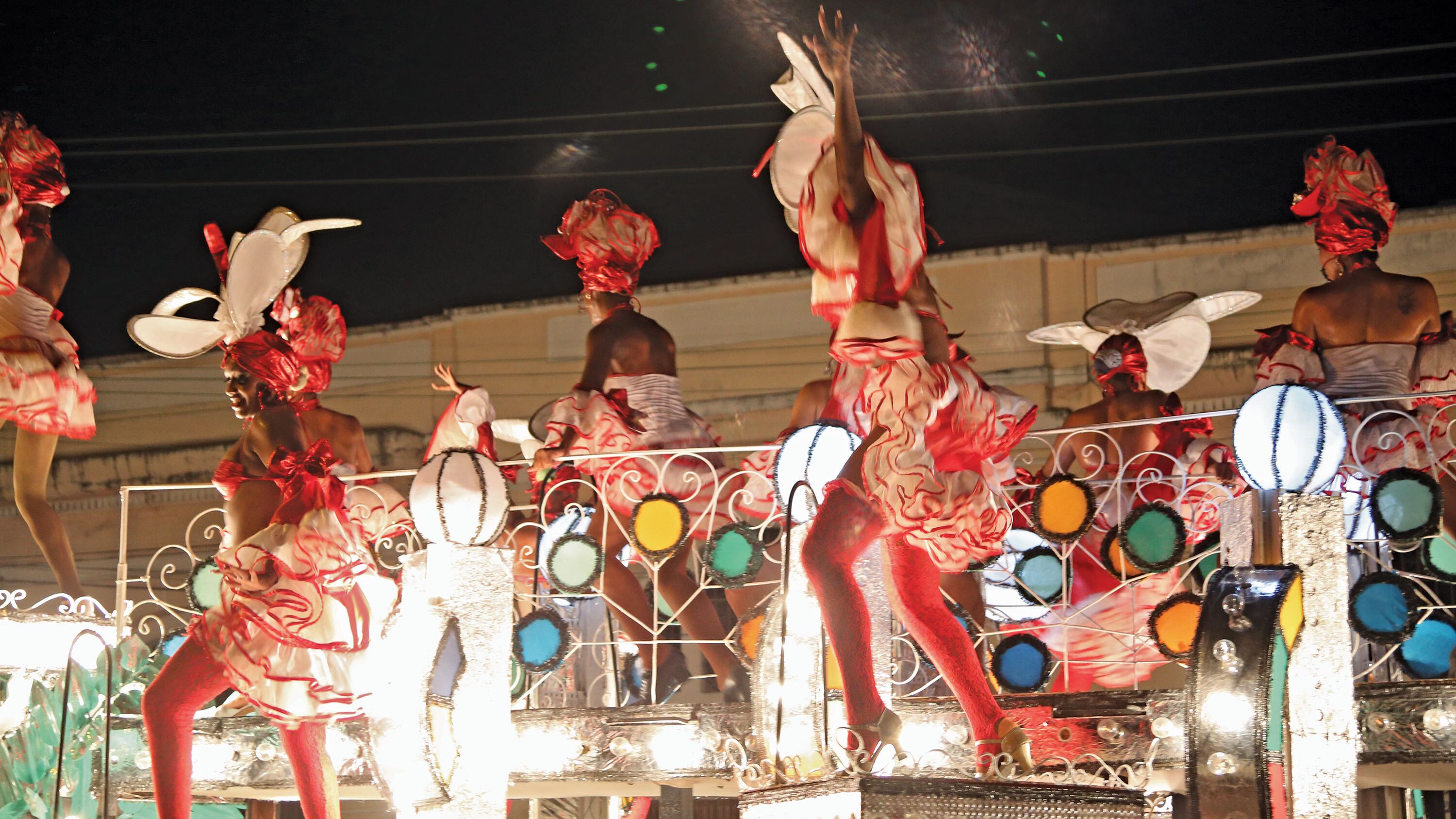Knowledgeable as Portland musicians and documentarians Oryan Peterson-Jones and Andrew Pritchard are of Cuban history and music, the Ken Burns approach doesn't fit one of the Western Hemisphere's most entrancing parties. So when the pair returned from Santiago de Cuba's unique, wall-to-wall Carnaval festivities in 2017, they assessed their mountain of footage and aimed for the immersive, wordless and kaleidoscopic.
The result is ¡Gracias, Santiago!, 26 minutes of hypnotic time-lapse, street-level glimpses into Cuban flamboyance and a celebration of the sheer stamina shared by the Carnaval crowd: from joyful children greeting the dawn to stooped old men meticulously fashioning the next day's hand drums.
Ahead of their project's premiere Thursday, July 25, at the Clinton Street Theater, creative partners and Datura Blues bandmates Peterson-Jones and Pritchard talked with WW about the consciousness-altering quality of truly round-the-clock music, rock 'n' roll's everlasting debt to Cuban rhythms and the screening of a film alongside theirs by Portland experimental world music label Sublime Frequencies.
WW: What did you experience at the 2015 iteration of Santiago's Carnaval that prompted you to return to film it in 2017?
Andrew Pritchard: Cuba is one of the most culturally rich countries in the world, and Santiago is a crossroads of history: the New Orleans of Cuba. If you had a next-door neighbor you hadn't talked to for 60 years, you'd have a lot of catching up to do.
What makes Santiago's Carnaval distinct?
Oryan Peterson-Jones: Right off the bat, it's in July, not before Lent. That goes back a few centuries and ties into their [Day of National Rebellion] on July 26. And this particular year [2017] was the first since Fidel Castro's death. At 5 am that day, all the people who'd been up partying all night long moved downtown to the military barracks. Everyone sat down. It became very reserved and stoic.
Pritchard: Our movie is not about the last 60 years of geopolitics, but on the other hand, the combined effects of the embargo and travel ban explain why the genuine cultural phenomenon of Carnaval can exist and remain so undiluted. We didn't see any other Americans there for weeks.
It's difficult to pinpoint in a 26-minute film how you actually experienced time on the streets of Santiago. Are we talking truly 24/7 live music?
Peterson-Jones: Twenty-four hours a day for a week, and they were actually extending for a couple days. You could easily compare it to big festivals in the States, except that there's no commercialism and a far less rigid timetable.
Pritchard: One of my favorite parts is that you hear this one groove, this ultimate Cuban psych groove from all the different comparsas [marching ensembles]. Imagine being at a marching competition for a week but every single band played the same groove. That shit's mind-bending. Then, all of a sudden, the sun is up again. And this band is gonna play from 2 am until 8 or 9 am—not exaggerating.
What are the hallmarks of music specific to Carnaval?
Peterson-Jones: The main instruments used in comparsas are the Chinese cornet (or zurna), while its percussionists play bocúes [high-pitched barrel drums], the quinto [a high-pitched small conga drum], galletas [bass drums], the pilón [a lower-pitched bass], and brakes [metal drums], which are struck with metal rods.
Pritchard: If you've ever enjoyed rock 'n' roll a minute in your life, then turn to the east or the south and give praise. The Bo Diddley beat, which you've heard in a million pop and rock songs, is Afro-Cuban. It's in the way people talk and walk.
Tell us about the Sublime Frequencies Hisham Mayet film screening alongside yours.
Peterson-Jones: Inviting Sublime Frequencies was very intentional. I had been a fan of Hisham Mayet for quite a few years. The film he's showing—Vodoun Gods on the Slave Coast, about sacred dance and ritual in Benin—was a big inspiration.
Pritchard: Viewing these two documentaries side by side collapses 500 years of time-space and colonialism.
SEE IT: ¡Gracias, Santiago! screens with Vodoun Gods on the Slave Coast followed by a Q&A session with Oryan Peterson-Jones and Andrew Pritchard at the Clinton Street Theater, 2522 SE Clinton St., cstpdx.com, on Thursday, July 25. 8 pm. $8.

